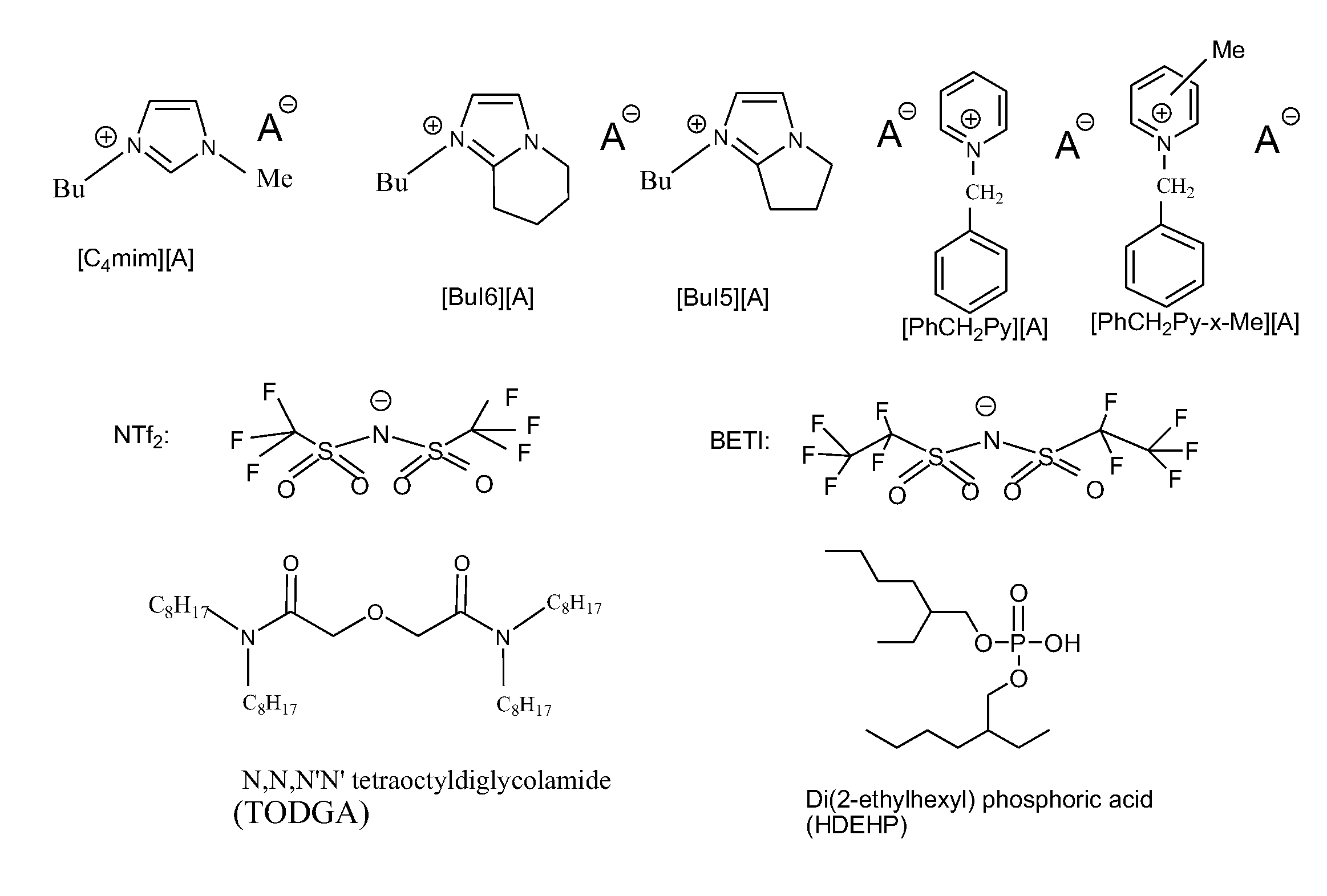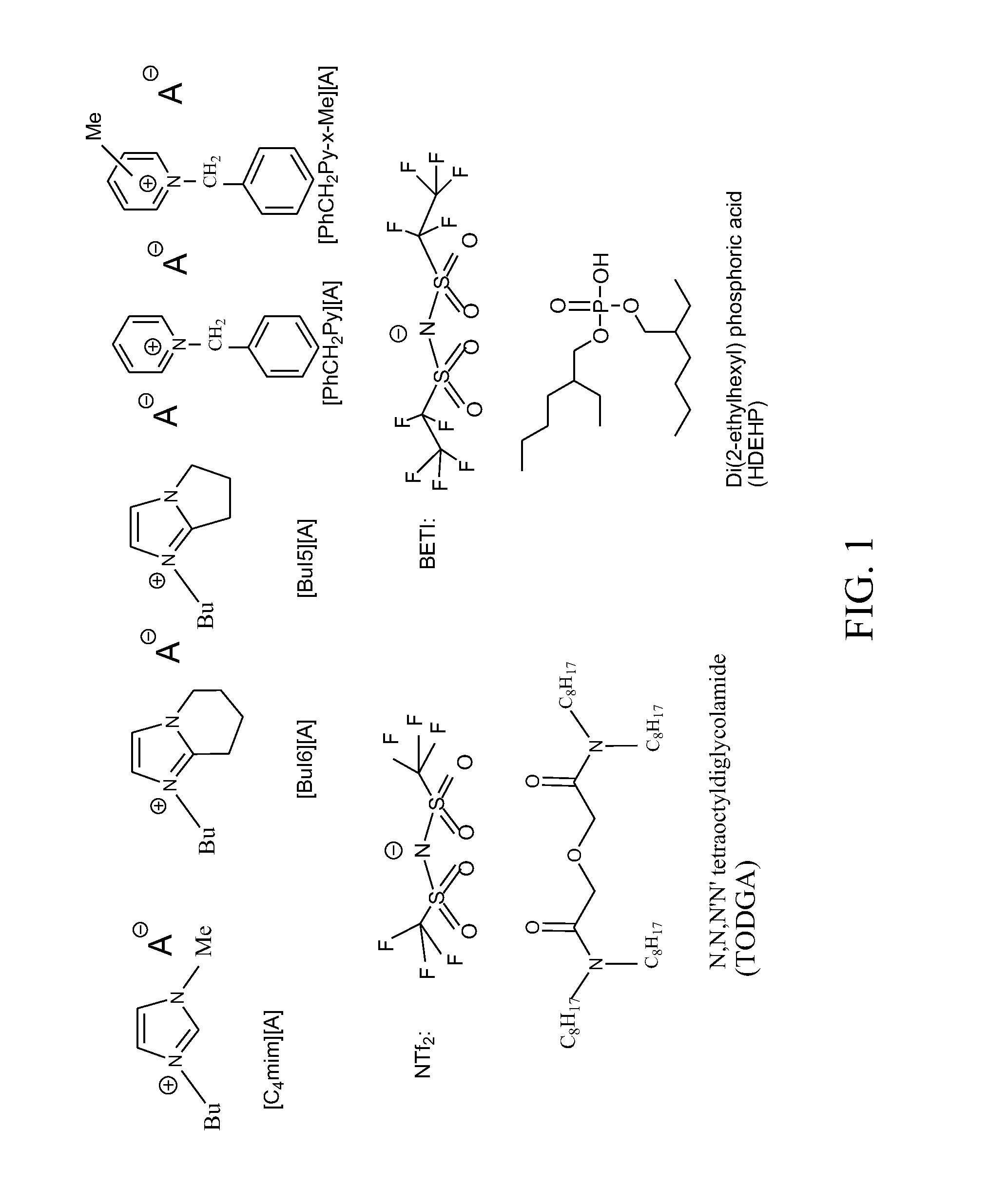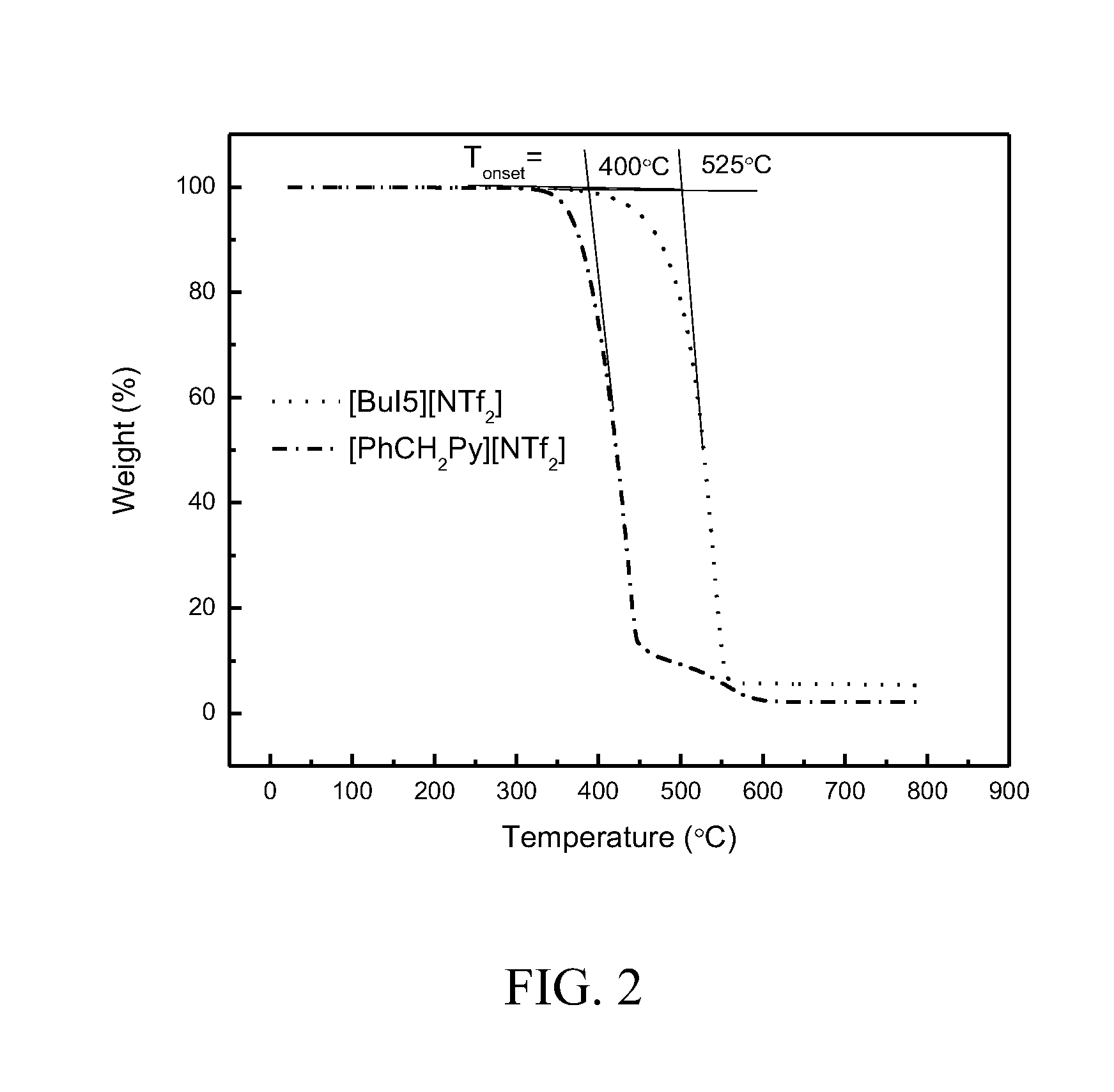Methods for separating medical isotopes using ionic liquids
a radioisotope and liquid separation technology, applied in separation processes, uranium compounds, nuclear engineering, etc., can solve the problems of increased processing time, increased production costs, and reduced performance of resin-based ac-225/bi213 generators at these higher levels of radioactivity, and achieves high conductivity, wide temperature range of stability, and non-flammability.
- Summary
- Abstract
- Description
- Claims
- Application Information
AI Technical Summary
Benefits of technology
Problems solved by technology
Method used
Image
Examples
example 1
Preparation of Ionic Liquids
[0109]Some of the ionic liquids (ILs) particularly considered in the instant invention are composed of imidazolium, bicyclic-imidazolium, and pyridinium cations with fluorinated anions, such as those depicted in FIG. 1. Initial characterization and testing have been performed on several of these ionic liquids.
Synthesis of bicyclic ionic liquid [BuI5][NTf2].
[0110]The bicyclic ionic liquid was synthesized according to a modified literature procedure (Kan, H. C., et al., “Bicyclic imidazolium-based ionic liquids: synthesis and characterization,”Tetrahedron, 63, p. 1644-1653, 2007). Hydrogen chloride gas was slowly bubbled though a flask containing 4-chlorobutyronitrile (20 mL, 200 mmoles) and methanol (15 mL, 2.5 equivalents) dissolved in diethyl ether (100 mL) for 4 hours. The solution was then placed in a freezer for 24 hours. The white precipitate was filtered and dried to give the intermediate, 3-chloropropanimidate hydrochloride in 40% yield.
[0111]To th...
example 2
Extraction Experiments
[0117]The extraction experiments were performed for each IL by contacting 0.05 mL of IL containing various concentrations of the extractant with 0.5 mL of aqueous solution containing Th-227 / Ac-225 for 60 minutes in a vibrating mixer. After centrifugation and standing overnight, the upper aqueous phase was separated, and waited for 30 minutes to allow Fr-221 (218 keV) to grow in. The radioactivities of Th-227 / Ac-225 in both phases were determined by gamma spectrometry. Th-227 was determined at 235 keV and Ac-225 was determined as Fr-221 at 218 keV.
[0118]The distribution coefficients (DM) for extraction of Mn+, and extraction efficiency (E %) are defined by the following equations:
DM={(R(IL)(R(AQ))}×{Volumeofaqueoussolution}{VolumeofIL}
E%=R(IL) / [R(IL)+R(AQ)]
[0119]In the above formulas, R(IL) and R(AQ) represent the final radioactivities of Mn+ in the ionic liquid and aqueous phase, respectively. Although the value of DM depends on the concentration of free extrac...
example 3
Separation of Th-227 and Ac-225
Separation of Th-227 and Ac-225 Using TODGA as Extractant
[0120]Solvent extraction experiments with radioactive Th-227 / Ac-225 were conducted using two ionic liquids [C4mim][NTf2], [BuI5][NTf2] containing different concentrations (0.8 mM, 4.0 mM, and 8.0 mM) of extractant (TODGA) at two different acidities (0.01 N HNO3, and 0.0001 N HNO3). The results are summarized in the plot shown in FIG. 3. As shown by FIG. 3, at these acidities, the extraction efficiency for Th-227 and Ac-225 increased quickly as the concentration of TODGA increased. When the aqueous phase was made less acidic (in 0.0001 N HNO3), the extraction of Ac-225 from aqueous (AQ) phase to ionic liquid (IL) phase was somewhat more efficient than that of Th-227 at higher concentration of TODGA. These experiments demonstrate that TODGA offered good extraction for both Th-227 and Ac-225 but very little separation of Th-227 from Ac-225 for both ILs at these acidities. Therefore, another extracta...
PUM
| Property | Measurement | Unit |
|---|---|---|
| extraction efficiency | aaaaa | aaaaa |
| extraction efficiency | aaaaa | aaaaa |
| atomic number | aaaaa | aaaaa |
Abstract
Description
Claims
Application Information
 Login to View More
Login to View More - R&D
- Intellectual Property
- Life Sciences
- Materials
- Tech Scout
- Unparalleled Data Quality
- Higher Quality Content
- 60% Fewer Hallucinations
Browse by: Latest US Patents, China's latest patents, Technical Efficacy Thesaurus, Application Domain, Technology Topic, Popular Technical Reports.
© 2025 PatSnap. All rights reserved.Legal|Privacy policy|Modern Slavery Act Transparency Statement|Sitemap|About US| Contact US: help@patsnap.com



